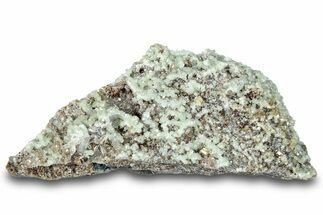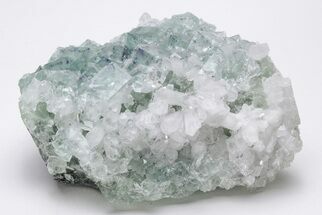This Specimen has been sold.
3.5" Yellow Quartz Crystal Cluster (Heat Treated) - Madagascar
This is a yellow quartz crystal cluster from Ansirabe, Madagascar.
Madagascar produces some beautiful quartz crystal specimens, some of which come from the Ambolo quartz mine in Antsirabe. Smoky quartz and citrine quartz have also been collected from this area, but the supply of natural citrine is extremely limited.
This specimen has the trademark yellow "citrine" coloration, but it is not natural. It acquired its color by heat treating smoky quartz. The yellow "citrine" quartz coming out of Madagascar is heat treated, even though dealers list it as "natural". Natural citrine is quite rare and the cost will typically reflect this. If the price of a quartz specimen listed as natural seems too good to be true, it likely is.
This specimen has the trademark yellow "citrine" coloration, but it is not natural. It acquired its color by heat treating smoky quartz. The yellow "citrine" quartz coming out of Madagascar is heat treated, even though dealers list it as "natural". Natural citrine is quite rare and the cost will typically reflect this. If the price of a quartz specimen listed as natural seems too good to be true, it likely is.
About Quartz
Quartz is the name given to silicon dioxide (SiO2) and is the second most abundant mineral in the Earth's crust. Quartz crystals generally grow in silica-rich environments--usually igneous rocks or hydrothermal environments like geothermal waters--at temperatures between 100°C and 450°C, and usually under very high pressure. In either case, crystals will precipitate as temperatures cool, just as ice gradually forms when water freezes. Quartz veins are formed when open fissures are filled with hot water during the closing stages of mountain formation: these veins can be hundreds of millions of years old.
Quartz is the name given to silicon dioxide (SiO2) and is the second most abundant mineral in the Earth's crust. Quartz crystals generally grow in silica-rich environments--usually igneous rocks or hydrothermal environments like geothermal waters--at temperatures between 100°C and 450°C, and usually under very high pressure. In either case, crystals will precipitate as temperatures cool, just as ice gradually forms when water freezes. Quartz veins are formed when open fissures are filled with hot water during the closing stages of mountain formation: these veins can be hundreds of millions of years old.
SPECIES
Quartz
LOCATION
Antsirabe, Vakinankaratra, Madagascar
SIZE
3.5 x 3.3"
CATEGORY
ITEM
#174664
 Reviews
Reviews













